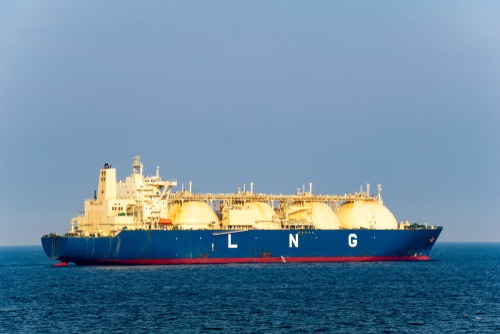
Without significant liquefied natural gas (LNG) exports from America, coal use in power generation across Asia could substantially increase, jeopardizing global emission reduction efforts, according to a new study commissioned by the Asia Natural Gas & Energy Association (ANGEA)
The study, conducted by data and analytics company Wood Mackenzie, projects that Asia’s LNG demand will nearly double, growing from 270 million tons per annum (mtpa) this year to 510 mtpa by 2050, driven by economic and population expansions, particularly in South and Southeast Asia.
Meeting this demand hinges on the United States lifting its current pause on LNG export approvals to non-free trade agreement countries, according to the study, which models energy demand, power generation, and the implications for gas demand for nations across Asia through 2050.
“If the pause is lifted and approvals and development of export facilities resume, then U.S. LNG is expected to comprise a third of global supply by 2035,” said ANGEA CEO Paul Everingham in a statement released Monday.
“But if it remains in place,” he said, “and planned and proposed U.S. LNG projects are not developed, there is a risk that LNG developments in other regions will fail to keep pace with anticipated demand growth.”
Without the resources to be self-sufficient, Asia must rely on LNG imports to meet its natural gas needs, according to ANGEA, or nations like Bangladesh, Vietnam, the Philippines, Indonesia, and Malaysia will not be able to realize their plans to transition to gas-fired power.
That’s especially true if LNG prices are high, Everingham added, noting that coal use, which hit record levels in both 2022 and 2023, will keep growing.
“Without certainty of an affordable supply, their fallback position, quite understandably, is to stick with a fuel they are familiar with and which they know is likely to be inexpensive and plentiful: coal,” he said.
Specifically, the study estimates that if LNG prices rise, coal consumption in 2035 could increase by 95 million tons, resulting in 100 million tons of additional annual CO2 emissions — equivalent to the emissions of 20 million cars.
“The study demonstrates that although there is considerable LNG supply set to enter global markets through the second half of this decade, strong uncertainty exists about the 2030s and beyond and this is impacting energy planning in Asia,” said Everingham.
He also said that this aligns with ANGEA’s experience engaging with key energy decision makers around Asia, who are planning to make long-term investments in gas supply and infrastructure worth tens of billions of dollars.
“The most common question they ask us is ‘where is our gas supply for future decades going to come from?’” added Everingham. “They want to know if the U.S. will be a reliable long-term supplier of the LNG they seek to replace coal in power generation.
“If it’s not from the U.S. or Australia, then this study shows gas would need to be sourced from less cost-competitive projects around the world and the likely outcome would be higher LNG prices than what many South Asian and Southeast Asian nations can afford,” he said.
Mangesh Patankar, head of Asia Gas and LNG Consulting at Wood Mackenzie, said the company forecasts growth in Asia’s LNG demand coming mostly from South Asia and Southeast Asia.
“Southeast Asia and South Asia will experience rapid growth in LNG demand throughout the 2030s and beyond, as energy demand continues to grow at pace and LNG provides a low-cost and low-carbon solution, alongside renewables, to reduce dependence on coal-fired power amidst depleted and declining domestic gas resources,” said Patankar.
The study found that continued growth in LNG production from the U.S. — the world’s biggest exporter — was essential to balancing global markets and providing emerging Asia with an affordable and available alternative to the high-emitting coal.
At the same time, the study also indicates that a range of Asian economies — including India, Indonesia, Malaysia, Thailand, and Vietnam — may have set net-zero targets that were too ambitious, according to Robert Liew, Wood Mackenzie’s director for Asia Renewables Research.
“There are implementation challenges that will continue to impact renewable energy projects in Asia,” Liew said. “These include grid challenges involving lack of battery storage to overcome intermittent generation, issues associated with land acquisitions required for renewables projects, and unattractive tariff regimes in several countries.”